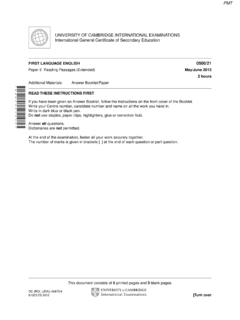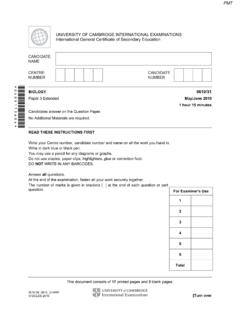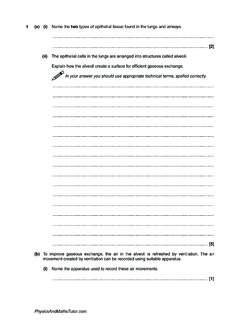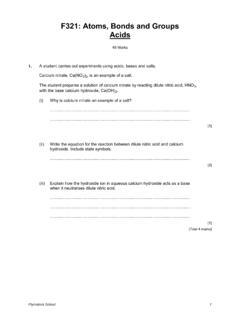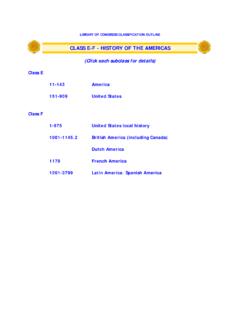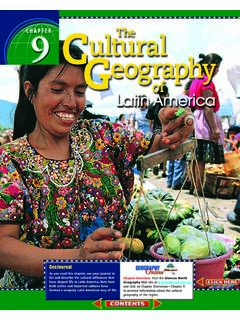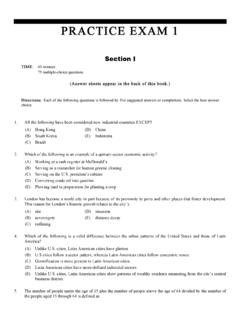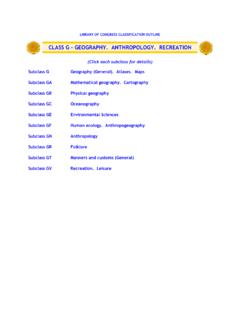Transcription of AQA Geography A-level 3.2.1: Global Systems and Global ...
1 AQA Geography A-level : Global Systems and Global Governance Detailed Notes What is Globalisation? Globalisation is the process of becoming more globally connectedon a variety of scales. It is the movementof people, knowledge, ideas, goods and money across national borders , leading to - theoretically - a borderless world . Economically, politically, socially and culturally,all countries are connectedin the sense that we are all influenced by one another. We buyproducts made in other countries, we talk to people across the globe on social media , we embrace other countries culturessuch as their music or food.
2 All of this is evidence of globalisation influencing our lives right now. Here are some more examples of globalisation on different scales: our environments are globalisedas pollutants from other countries can affect our climate . Also, laws and regulationsare put in place by intergovernmental organisations (IGOs) that affect what we can do to our environment, such as the Montreal Protocol (1987) which - among other things - called for drastic reductions in the production of CFCs internationally.
3 In the 21st Century, our societies are globalised societies ; (almost) everyone in the world is influenced by other countries and people. Without globalisation, there would be no interactionor influences from other countries. That means every product we buy would be made in the UK, there would be no international holidays, and probably no chocolate! We need globalisation in order to thrive as societies, as the things we share with other countries allow our societies to develop.
4 Dimensions of Globalisation When countries share things with one another, it s known as a flow .This is because things are flowing (moving) from one country to another. Flows can be physical like people or products, but they can also be ideas and concepts such as money (capital), services, or information. The different flows in globalisation are: capital, labour, products, services and information . These flows are the dimensions of globalisation - they are the reason globalisation exists.
5 Capital Capital flows are the movement of moneyfor the purpose of investment , trade or business production. Labour Flows of labour are the movement of peoplewho move to workin another country. Products Flows of physical goods from one country to another. Services Services are footloose industries, meaning they can locate anywhere without constraints from resources or other obstacles. Services flow as they can be produced in a different countryto where they are received ( international call centres).
6 Information Any type of information can flow from one place to another via the internet, SMS, phone calls etc. For example, international news. Flows of capital There are millions of capital flows happening all over the world . Some of the world s major flows occur between 4 main groups: regions - wealthier, developed countries that have regions - less wealthy, developing/ less developed countries that have lesspower) Monetary Fund (IMF) - an international corporation that aims to (in their words) foster Global monetary cooperation, secure financial stability , facilitate international trade, promote high employment and sustainable economic growth , and reduce poverty around the world .
7 world Bank - a group of Global institution that give out loans for development or flows also occur withincore regions. Huge capital flows pass through the major stock marketsin megacities. Also, in the EU, cross border trade in finance has increased due to absence of barriers . Flows of Labour Labour flows are essentially migration . There are different types of migration, and it is important to recognise what type of migration has movedfor the purpose of contributing to the country s workforce.
8 Economic migrants- People who have moved voluntarilyfor reasons of work and improved quality of life. Refugees- People who have been forced to leave their homes and travel to another country due to fleeing conflict, political or religious persecution . They have been granted permanent or temporary residency by the host country or the UN refugee agency (UNHCR). Asylum seekers- People who have left their country and are seeking asylum in another. They are waiting to be granted residency and to become a refugee.
9 Major Labour Flows International labour flows are flows from one country to another country . Today, 3-4% of the world s population are international migrants . The majority of international migration is migration to a high income country. of high income country populations are made up of international migrants, whereas only of low income country populations are made up of international migrants. continents, the three major labour flows are between: Asia- 63 million people moved to a different area of Asia while living in Asia in 2017, making it the largest labour flow in the world .
10 The largest flows are between South Asia to West Asia; 5 million migrated from India , Pakistan and Bangladesh to Qatar , Saudi Arabia , the UAE and Bahrain . This movement is usually for better job prospects as Western Asia is generally wealthier. Europe-41 millionmoved to other areas within Europe in 2017. Germany holds the largest amount of European migrants . The majority of German immigrants have moved fromEastern European countries such as Poland ( millionliving in Germany), Romania ( 590,000migrants), and the Czech Republic ( 540,000 migrants ).



